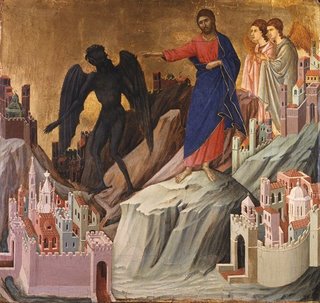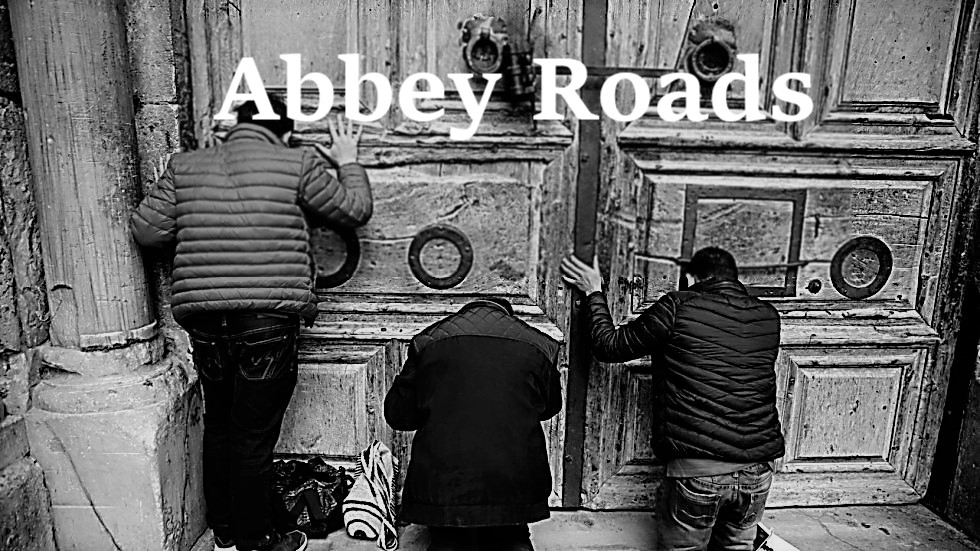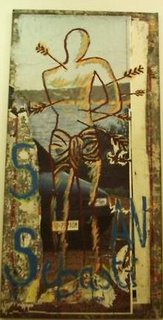
Today's readings at Mass focus upon marriage - an old fashioned idea - yet one Hollywood celebrities seem to enjoy doing over and over.
I love the passage from Genesis, wherein the Father brought the animals to Adam for him to name - just like little kids get teddy bears and bow-wows to name and play with from their parents.
In His Providence, God recognized man needed a partner and created Eve from his side. So pay attention ladies - the man was first. Evolutionists ought to think about this as well.
Thinking about marriage however, one cannot help but recognize how it has disintegrated today in our society with the increase of divorce over the recent decades, along with the trend of couples more frequently cohabiting without benefit of marriage. Many of those who feel they do not need to be married to authenticate their union have done so after having endured a divorce or some other trauma in their own family. Many people in their desire for affirmation or self-preservation do not seem willing to admit the consequences of divorce upon their children. Granted, in some cases a marriage was bad from the beginning, perhaps there was abuse, or intolerable alcoholism, or some other mitigating circumstance, wherein there was no other alternative but divorce, or at best, annulment. That isn't my focus.
It's the kids. My own mother was divorced and remarried my father, I have an older sister and brother from her first marriage. There are negative effects in such a family. There had always been a sort of disconnect between my step siblings and myself. My brother really didn't like me, I'm certain he resented me. My mother resented my brother and sister, because every time she looked at them, she was reminded of her 1st husband, whom she despised. And my dad never adopted them. It wasn't a happy home. Nevertheless, this isn't about me.
It's about a woman I know. She has a little brother. Her parents were divorced when she was about four or five-years old I think, her brother was a baby. The mother was addicted to drugs and alcohol and rather promiscuous. As is often the case in divorce, the kids go with the mother. Though not homeless, my friend and her brother were pretty close to being so. Sometimes they would awaken in the morning not knowing where the mother was, only to find out a day or two later she had been in jail. An occasional ray of sunshine for them was when they would be placed in a foster home, although the niceties and kindness of the strange people who took them in baffled them. They didn't know how to act.
They moved a lot. The mother was drunk or doped up most of the time, the house was full of other types just like her mom, and of course, the kids were abused and neglected. Sometimes, when the mother was in jail, they scrounged in dumpsters for food. At school they were humiliated and rejected because they were dirty and poorly clothed. It was a horrible life.
One day when my friend was little, she was watching a cartoon on television and found herself identifying with a strong cartoon character who was a fierce animal. She was convinced she was watching herself - in other words, she adopted the beast as her interior identity. To this day she feels within her deepest self that this is her true identity - her true self. She is normal and functions ably in the workplace and society, nevertheless, interiorly she is always the outsider. Her self image had been shattered in her formative years and she found a means to cope and pull herself up and out of a near animal existence - by identifying with an animal.
It caused me to wonder, this concept of the "shattered image" many people have had to come to terms with in their life. It wasn't a great leap for me to view trans-gender or homosexual persons with the same compassion and understanding that I learned from my friend. Many of these people must have had some experience in their life that caused them to choose an identity contrary to their created being. What else could convince someone so fundamentally that they are indeed other than the norm of those around them, the person they were created to be?
It is not just divorce that shatters one's image of oneself, or one's identity, there are many dynamics at work. Yet, it seems to me, as the family disintegrates, and the stability of marriage is cast aside, society itself shatters, hence the children, the most vulnerable, have no compass.
My friend still lives with her brother, who has children from a broken marriage. They work and make a good living and home for their "family.' My friend is an uber-Catholic, if you will. She went through very much to get to the Church: aspects of the occult new age, fundamentalist Christianity, and so on. The abuse and dysfunction she discovered in the Catholic Church moved her to find greater stability in the strictures of the traditionalist movement. It demonstrates her need for moral absolutes, coming from a life wherein reality was what can only be called
occult - that is, obscured and distorted. Thus in traditional Catholicism she has found the truth for which she had been yearning. My friend still has issues that she works on, but I see her growing and becoming whole. Grace builds upon nature, and God is allowing her to understand and find her true identity.
We must sometimes step out of our paradigm and try to understand one another - we never know what may have happened in the life of the person next to us. Prayer for one another is good. Pray for my friend who has helped me understand things a little better.















